Building a Collection #67
Serenade No. 13 for strings in G major, “Eine Kleine Nachtmusik”
By Wolfgang Amadeus Mozart
________________
What a journey it has been, and we are not even one-third of the way to covering the top 250 classical works ever composed! I am thrilled you have chosen to join me on this journey, and if you are so inclined I hope you will go back and read about your favorite pieces we have already covered, along with recommended recordings. We are currently at #67 and we arrive for the 8th time at a work by Wolfgang Amadeus Mozart. This time it is his popular and beguiling serenade for strings, Serenade No. 13 in G major. Mozart himself wrote a notation on the score, “Eine Kleine Nachtmusik”, or “A Little Night Music”, giving us our first hint that this is a work of lightness and joy (scholars don’t believe Mozart was intending to give the work a title, but was merely making a note to himself on how to catalog the work). But despite its charm and appeal, Mozart includes some of his most intricate and sophisticated musical ideas in this evergreen work.
Wolfgang Amadeus Mozart
The incomparable genius Wolfgang Amadeus Mozart (born 1756 – died 1791) was an Austrian composer of opera, symphonic works, concertos, choral and vocal works, keyboard pieces, orchestral works, and chamber music. Despite his short life, Mozart produced more than 800 works, and scholars say he likely composed even more that will never be known or recovered. Mozart was the only son of a proud, infamous, and rather exploitative father by the name of Leopold Mozart. When Leopold realized his son’s prodigious talent, he toured him all around Europe to show him off. It is debated whether these trips contributed to Mozart’s chronic illnesses, as he had bouts of typhus and smallpox during childhood. In any case, it left Mozart with a lot of resentment for his father. Indeed, Mozart would later boycott his own father’s funeral.
Although Mozart was employed off and on by royalty beginning in 1782, he was essentially self-employed. He married Constanze Weber in 1783 without his father’s approval. Astonishingly, by the age of 20 Mozart had written nine operas, five violin concertos, at least 30 symphonies, sets of divertimentos and serenades, many liturgical works, six sonatas, and six concertos for piano. Although Mozart had several teachers, including his father, he was increasingly influenced by Michael Haydn (younger brother of legendary composer Franz Josef Haydn). Between the years 1782 and 1786, Mozart produced a group of piano concertos from no. 12 to no. 25. He would go on to write only two more piano concertos before his death. His final five operas are generally considered his greatest: Le Nozze di Figaro (The Marriage of Figaro), Don Giovanni (Don Juan), Cosi Fan Tutte, Die Zauberflöte (The Magic Flute), and La Clemenza di Tito (The Clemency of Titus). His symphonic production reached its apex with his final four symphonies, nos. 38 – 41.
If you are looking for more information on Mozart, there are some very fine books available:
Mozart: A Life by Maynard Solomon (Harper 1995)
Mozart: The Man Revealed by John Suchet (Pegasus 2017)
Mozart: The Reign of Love by Jan Swafford (Harper 2021)
Serenade No. 13, “Eine Kleine Nachtmusik”
The circumstances surrounding the composition of Mozart’s Serenade no. 13 are unclear, but most likely involved Mozart receiving a commission to write the work. Completed in August 1787, it was concurrent with Mozart’s work on his opera Don Giovanni. The premiere date of the serenade is not known, but it was not published until 1827, long after Mozart’s death, being part of a large collection of Mozart’s works sold by his widow Constanze.
Partly due to the tag Mozart gave it, but mostly due to its delightful musical invention, Eine Kleine Nachtmusik has become one of Mozart’s most enduringly popular works and is performed and recorded often. The serenade is in four movements, as follows:
Allegro (G major)
Romanze: Andante (C major)
Menuetto: Allegretto (G major, with trio in D major)
Finale: Allegro (G major)
Dr. Justin Wildridge from cmuse.org comments on the serenade:
Mozart chooses G major for the opening key, far away from the dark D minor mood of Don Giovanni. The opening movement is in Sonata form. Romanze is marked Andante and has the key of C major. This movement acts as the slow movement of a Symphony would and is lyrical in character without being overly sentimental. There is a tenderness that flows through this movement with the subtle hint of a dance rhythm given by the upbeat at the start of each section.
Next follows the Menuetto, which finds us back in the key of G major and with a tempo marking of Allegretto. The mood lifts with this movement and it follows the expected form of a da capo Minuet, the opening section repeated after the trio section.
The finale is everything one might expect from a Mozart Rondo. Written in the key of the opening movement Mozart assigns a lively allegro tempo to this concluding piece. As if rounding off the whole composition in the way he began, Mozart returns to Sonata form for this movement. Even though Mozart loved to compose in Rondo form, (A, B, A, C…) because it gave him an endless potential for melodic creation, the sonata form here provides Mozart ample opportunity to develop his musical material. By the final bars, we are left elated and buoyed up by an effervescent Mozart whose music seems to rise above the immense struggles he faced that year.
Even though the serenade was written for a quintet of two violins, viola, cello and double bass, today it is often performed by chamber orchestras or full orchestras. There is evidence that Mozart intended the serenade to be five movements, so there has been a significant amount of scholarship done about what happened to the missing movement. It is not known whether Mozart himself removed it, or whether someone else removed it. Different theories of whether it was incorporated into other works, or reworked by scholars following Mozart’s death are inconclusive. The four movement work we know today probably feels complete because this is how we have been listening to it for centuries.
The American composer, music educator, and parodist Peter Schickele parodied Eine Kleine Nachtmusik with Eine kleine Nichtmusik and A Little Nightmare Music.
Recommended Recordings
Despite Serenade no. 13’s musical bon-bon feeling and easy charm, recordings of this masterpiece are difficult to get just right in terms of tempo, repeats, and the tricky second movement Romanze: Andante which can become too slow and somnolent in some performances. Then there are the different textures you might hear in a quintet version, a chamber orchestra version, and a full orchestra version. The question arises about Mozart’s original intentions, and whether subjecting the work to the full orchestral treatment is really effective. A serenade not a symphony after all, and some of the phrases don’t feel quite right being projected with large, thick textures. I very much like the quintet version, although then you run the risk of not having enough weight in the strings. As the listener, you have to decide what you like to hear of course. At the end of the day, Eine Kleine Nachtmusik passes the test as a truly great piece of music because it can sound just as great when played using diverse styles.
My favorite recording of the serenade is by the Vienna Konzerthausquartett on the Westminster label from 1954, a performance of grace and charm recorded in the Mozart-Saal in Vienna. This is the quintet version with two violins, viola, cello, and double bass. I can think of no recording which surpasses this one on performance terms. Tempos are nearly ideal, dynamics are ideal for a chamber sized group, and it oozes classical charm and has a good deal of refinement. The middle movements are a bit slower, but never dull, and the Menuetto has a nice sort of Viennese lilt to it. Modern instruments are used of course, and the string tone is appropriately full and sweet. The recording is very fine for 1954, close and intimate. There is some mild screech to some of the higher notes, but this is not bothersome.
On the big band side, we have the perpetually underrated Antal Doráti leading a most lovely version of the serenade with the London Symphony Orchestra in a recording made in 1956 at Walthamstow Assembly Hall in London by Mercury/Decca. This has verve and sparkle, and there is no hint of heaviness or stodginess. Doráti is aided by the LSO playing wonderfully, but also by the superb sound engineering. The Romanze is romantic without lingering, and the pulse is maintained nicely. The same can be said of the Menuetto, which is on the brisk and tidy side, but which feels just right. The Rondo is delightfully sprung and well-detailed. This is a Mozart performance ahead of its time, as you might mistake it for a more modern performance with its pace and energy. A completely winning performance.
Another full orchestra rendition which sparkles is the 1956 recording by Otto Klemperer and the Philharmonia Orchestra on EMI/Warner. Klemperer was a wonderful Mozart advocate at a time when Mozart was somewhat out of fashion. Yes, this is slightly heavier and more traditional Mozart. But it is so well played and recorded and is injected with obvious affection and personality. The Allegro is terrific, the Menuetto is spiritual, and the Rondo is rousing. The sound is good early stereo with plenty of weight, detail, and clarity.
A surprise find was the Nederlands Kamerorkest led by Szymon Goldberg, a chamber sized performance from 1958, originally on the Philips label. It is available on streaming services. This is an incisive and sharply defined performance in the outer movements, along with some absolutely beautiful playing in the Romanze. Once again, we have modern instruments and more traditional rubato etc., but this has a lightness when needed partnered with enough weight when called for. The pacing seems close to ideal as well, and dynamics are alert. A wonderful version.
The legendary George Szell was a marvelous Mozart interpreter in my opinion, and this holds true on his 1969 release (recorded 1958?) with The Cleveland Orchestra on Sony as well. Szell leads a taut, exciting, and modern feeling performance with a full orchestra which avoids the pitfalls of becoming too bloated or stodgy. Details are heard to wonderful effect in a full and up-close recording. I am often amazed at how the scowling Szell, at times portrayed as the ultimate conducting tyrant, could bring forth Mozart recordings of such wit and joy. He doesn’t linger in the Romanze (which I tend to prefer), and he finds an ideal pulse for both the Menuetto and Rondo. Terrific.
The Czech Talich Quartet’s recording from 1977 on the La Dolce Vita label was made in Paris, and it has a delicacy and charm which I love. This is another smaller scale performance, intimate in scope, but with plenty of wonder and energy where needed. The sound is not perfect, but more than acceptable. I especially enjoy their Rondo, which is playful and heartfelt. This is not smooth and manicured Mozart, and at times the ensemble is not perfect. But I enjoy the personality and joy of the performance.
Back to a chamber sized performance, this time with the Franz Liszt Chamber Orchestra under violinist and conductor János Rolla, a recording made for Hungaroton in 1982. There is nothing radically out of the ordinary about this performance, it is just a solidly played (on modern instruments), intelligent, and musically adept performance with style and energy. The sound is a bit edgy at times, but overall, the sound is quite good. The Romanze is on the slower side, as some listeners might prefer, and has a delightful allure. The Menuetto is taken at a reasonable pace for the dance, and the Rondo sizzles with life and vitality. The later 2000 recording with this orchestra under Sándor Frigyes on Capriccio is not as charming and is marginally less well recorded.
One of the first CDs I owned was a collection of shorter pieces played by the Italian chamber music group I Musici led by violinist Pina Carmirelli, originally on the Philips (Universal) label from 1983. The recording still holds up quite well and remains one of my favorites. This one was how I came to know Eine Kleine Nachtmusik, so I feel somewhat sentimental about it. But it is played with refinement and sophistication, and if it is a straightforward reading with few bells and whistles, that is all to the good when it is played this well.
The Vienna Philharmonic has the music of Mozart in their blood, and their warmth and signature sound is a good match for Mozart’s idiom. They also made several very fine Mozart recordings under the late James Levine, and their recording of Eine Kleine Nachtmusik from 1983 on Deutsche Grammophon is one of the best. Tempos are moderate but they never drag, and textures are transparent and clear. The orchestra employs their typical lilt, and it all fits within a coherent vision. The sound is among the best early digital projects from Vienna, without too much glare.
The conductor less American Orpheus Chamber Orchestra also offers up one of the best versions of this popular serenade, recorded by Deutsche Grammophon in 1986. On modern instruments, the Orpheus brings a sprightly and inflected performance, fleet of foot and nicely energizing. The level of musicianship is high, and choices are reasonable. The Romanze is hauntingly beautiful, and the final Rondo is winning in every way. The sound is a bit bright on top with some slight glare, but this is not a problem.
The Kremerata Baltica chamber orchestra, founded by violinist Gidon Kremer in 1987, is one of the premier chamber orchestras in Europe. I find their 2001 recording of Eine Kleine Nachtmusik on Rhino to be one of the freshest and dynamic accounts available. While Kremer and his group are more well-known for some of their forays into contemporary classical music, they have also produced outstanding accounts of mainstream works such as Vivaldi’s Four Seasons. This is a forward-looking account which is stimulating in its own way, and although Kremer doesn’t resort to gimmicks to modernize it, he does insert some improvisatory touches here and there. Modern instruments are used along with vibrato by the strings, but phrasing is pointed and rhythmically alert. I enjoy the playfulness and clarity, and the rest of the album is equally interesting.
The English Concert under violinist and conductor Andrew Manze also present a refreshing take on the serenade in a recording from 2003 on Harmonia Mundi, emphasizing the lightness and grace of each movement. Textures are clear, although at times I found myself wanting just a touch more weight in the strings. Having said that, this is an imaginative reading full of flair and personality. Listen to the expressive Romanze and the lively and engaging Rondo. Accents are sharp and sprung, and phrasing feels spontaneous making this over familiar music sound new. The English Concert sound as though they are having fun. Recommended.
Another surprise comes from the Kammerorchester Berlin and violinist Katrin Scholz in a 2003 recording on the Berlin Classics label. This is completely enjoyable from first to last, and its joy is infectious. The performance occupies a middle ground between traditional and modern, and it has energy and elan. I really like the clarity of the recording; it is well detailed, and the sound is full and resonant. There is also a precision to Scholz and her group’s articulation and unity which is impressive. This should not be missed.
One of the finest period instrument versions is from Spanish viol player and conductor Jordi Savall and his Le Concert des Nations, recorded in 2005 by the Alia Vox label. While not quite as imaginative as Manze’s version above, in some ways I prefer it due to a fuller string sound. Savall employs less vibrato, quick tempos, particularly in the middle movements (the Menuetto is almost too fast), and we have the benefit of a high level of virtuosity and crisply accented phrases. The Rondo is an exciting tour de force. The sound is clear and transparent. In summary, this is highly recommended.
The 2008 recording from the Moscow Soloists led by violist Yuri Bashmet on the Onyx label nearly made the “essential” list as for me it is a nearly perfect recording of this wonderful music. I love how Bashmet uses varying dynamics and phrasing in the Allegro, this is spirited and moving musicianship. Speeds are on the faster side, but not excessively so, and vibrato is present but kept to a minimum. The Rondo is terrific, colorful and jubilant. The album also contains top rated accounts of Grieg’s Holberg Suite and Tchaikovsky’s Serenade for Strings. A winner.
The 2013 recording by the Chamber Players of Canada on the ATMA label is another version I want to recommend. This is beautifully played with lean textures and moderate to fast tempos. The sound is clear and detailed, and accents are well-defined. The Romanze is notably relaxed and includes some improvisatory moments which I found enjoyable. The atmosphere is light and airy, and the forward pulse is maintained superbly.
Honorable Mention
Vienna Philharmonic / Herbert von Karajan (Warner 1946)
Bavarian Radio Symphony Orchestra / Eugen Jochum (DG 1951)
Perpignan Festival Orchestra / Pablo Casals (Sony 1951)
Vienna Philharmonic / Wilhelm Furtwängler (Warner 1952)
Philharmonia Orchestra / Herbert von Karajan (Warner 1953)
Columbia Symphony Orchestra / Bruno Walter (Sony 1954)
NDR Sinfonieorchester / Hans Schmidt-Isserstedt (idagio 1955)
Israel Philharmonic / Georg Solti (Decca 1958)
Berlin Philharmonic / Ferenc Fricsay (DG 1958)
The Philadelphia Orchestra / Eugene Ormandy (Sony 1959)
Academy of St. Martin-in-the-Fields / Neville Marriner (Decca 1971)
New York Philharmonic / Leonard Bernstein (Sony 1973)
The Amadeus Quartet (DG 1980)
Academy of St. Martin-in-the-Fields / Sir Neville Marriner (Warner 1986)
St. Paul Chamber Orchestra / Bobby McFerrin (Sony 1995)
Takacs Quartet (Decca 1997)
Academy of St. Martin-in-the-Fields / Iona Brown (Haenssler 2000)
Accademia Bizantina / Ottavio Dantone (Decca 2016)
Australian Chamber Orchestra / Richard Tognetti (ACO 2017)
Archi di Santa Cecilia / Luigi Piovano (Arcana 2020)
Zurich Chamber Orchestra / Daniel Hope (DG 2020)
Ostrobothian Chamber Orchestra / Sakari Oramo (Orfeo 2021)
That wraps it up for this installment of Building a Collection. Please join me next time for #68, Rossini’s Il Barbiere di Sevilla (The Barber of Seville). See you then!
_______________
Notes:
Einstein, Alfred (1962). Mozart, His Character, His Work. Translated by Arthur Mendel, Nathan Broder. Oxford: Oxford University Press. ISBN 978-0-19-500732-9. OCLC 31827291.
Holoman, D. Kern (1992). Evenings with the Orchestra: A Norton Companion for Concertgoers. W. W. Norton & Company. ISBN 0-393-02936-0.
Jacobson, Julius H. (2003). The Classical Music Experience: Discover the Music of the World's Greatest Composers. Vol. 2. narrated by Kevin Kline. Sourcebooks. ISBN 1-57071-950-0.
Wildridge, Justin Dr.Eine kleine Nachtmusik by W.A Mozart (K. 525). March 13, 2018. Online at https://www.cmuse.org/mozart-eine-kleine-nachtmusik/.
Zaslaw, Neal; Cowdery, William (1991). The Compleat Mozart: A Guide to the Musical Works of Wolfgang Amadeus Mozart. Norton. ISBN 0-393-02886-0.
https://en.wikipedia.org/wiki/Eine_kleine_Nachtmusik?scrlybrkr=40ad99ec#Possible_extra_movement.

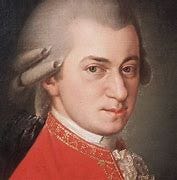
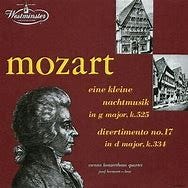
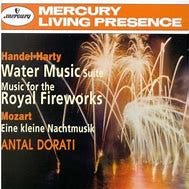

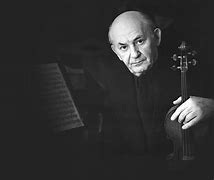
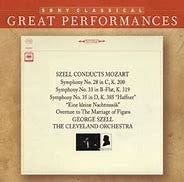
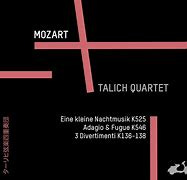

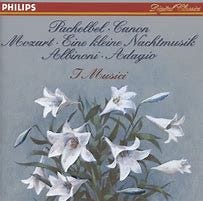
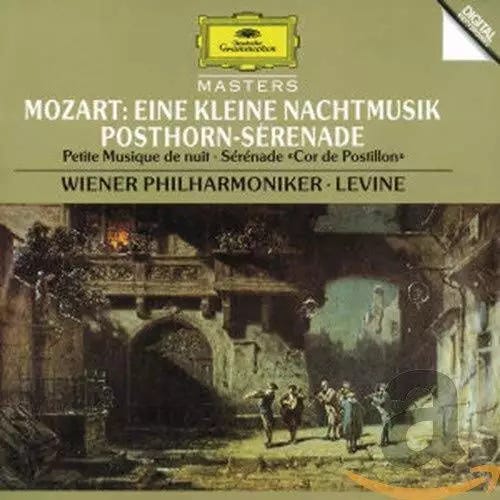

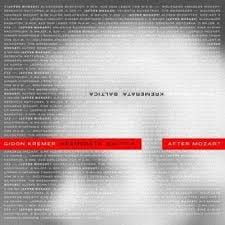


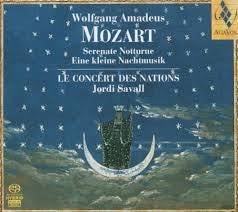
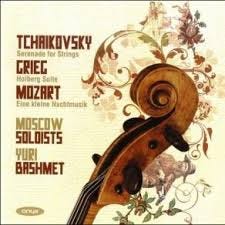
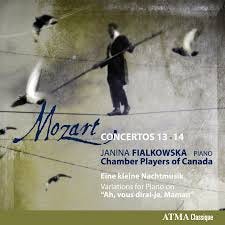
Thank you John. Despite I have a very large collection of Classical Music, every time I can find in your survey inspiration for new discoveries! For example I didn’t know Kremer’s and Bashmet’s versions (The russian way to Mozart) and they are fantastic! I allow myself to suggest to you to listen to Sandor Vegh/Camerata Academica Salzburg version on Capriccio. As you know Vegh was a great mozartian director and here he shows it very well. One of my favorite version.